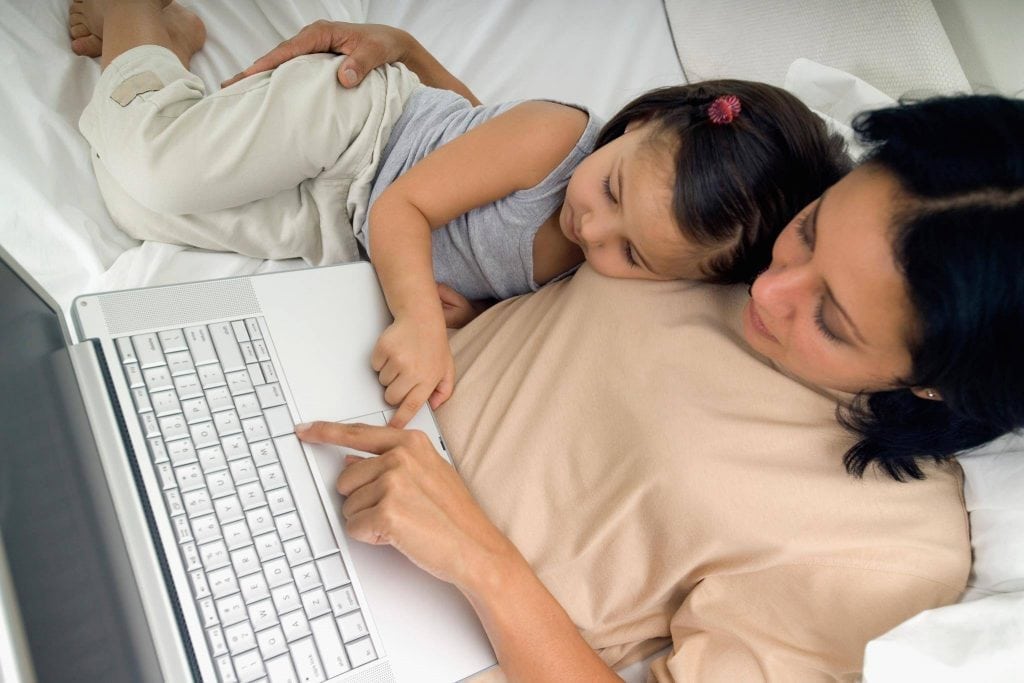 A first-of-its-kind study released this month by Common Sense Media shows that parents spend more than nine hours (9:22) a day with screen media, the vast majority of that time being spent with personal media (7:43) and only slightly more than 90 minutes devoted to work media. The vast majority of these parents (78%) believe they are good media-use role models for their kids. Meanwhile, many parents are concerned about their children’s media use, including thinking that their children may become addicted to technology (56%) and that technology use negatively impacts their children’s sleep (34%).
A first-of-its-kind study released this month by Common Sense Media shows that parents spend more than nine hours (9:22) a day with screen media, the vast majority of that time being spent with personal media (7:43) and only slightly more than 90 minutes devoted to work media. The vast majority of these parents (78%) believe they are good media-use role models for their kids. Meanwhile, many parents are concerned about their children’s media use, including thinking that their children may become addicted to technology (56%) and that technology use negatively impacts their children’s sleep (34%).
“These findings are fascinating because parents are using media for entertainment just as much as their kids, yet they express concerns about their kids’ media use while also believing that they are good role models for their kids,” says James P. Steyer, founder and CEO of Common Sense. “Media can add a lot of value to relationships, education, and development, and parents clearly see the benefits, but if they are concerned about too much media in their kids’ lives, it might be time to reassess their own behavior so that they can truly set the example they want for their kids.”
The study, the Common Sense Census: Plugged-In Parents of Tweens and Teens, finds significant differences in media use by population. Nearly two-thirds of Hispanic and African-American parents (66% and 65%, respectively) are highly aware of the content their children see or hear when using media, compared to half of white parents (51%). Hispanic parents are also more concerned about technology addiction (63% vs. 55%) and the impact of technology on their children’s sleep (43% vs. 30%).
“Latino parents use more media, are more engaged in children’s media use, and are two to three times more concerned about their children being online,” says Maria Alvarez, director of Latino content and outreach at Common Sense. “Common Sense has developed excellent tools and resources to help parents and communities address these concerns in a way that helps kids get the most out of technology while avoiding the perils.”
Other key findings:
- SOCIAL MEDIA: 50% of parents believe that social media hurts children’s physical activity.
- INTERNET USE: Parents are “moderately” or “extremely” worried about kids spending too much time online (43%), over-sharing personal details (38%), accessing online pornography (36%), and being exposed to violent images or videos (36%).
- MONITORING KIDS: Two-thirds (67%) of parents say that monitoring media use is more important than respecting their children’s privacy.
- RULES: A majority of parents report that mobile devices are not allowed during family meals (78%) or bedtime (63%).
- ETHNICITY: African-American parents (10:37) spend about an hour and a half more with personal screen media than Hispanic parents (8:52), who spend about two and a half hours more with personal screen media than white parents (6:38).
- INCOME: Parents from lower-income households spend more time with personal screen media (9:15) than middle-income parents (7:42), who spend more time than higher-income parents (6:41).
- EDUCATION: Parents with a high school degree or less spend the most time with personal screen media (9:03), as compared with parents with at least some college (7:41), who spend more time than parents with an undergraduate degree or higher (6:10).
- POSITIVE VIEWS: Parents largely have positive attitudes about the role of technology in supporting their children’s schoolwork and education (94%), acquisition of new skills (88%), and preparation for 21st-century jobs (89%).
Common Sense recently launched a multiyear national media campaign to encourage families to stop using mobile devices during family meals. Thousands of people have taken the #DeviceFreeDinner (#CenarSinCelular) challenge, and new ads are being unveiled this holiday season when families spend more quality time around the table. In addition, Common Sense Education’s Digital Citizenship Curriculum, which provides educators with lesson plans on subjects including privacy, media literacy, and cyberbullying, is currently being used in close to 93,000 U.S. schools. For more tools to manage media use, visit commonsense.org.























